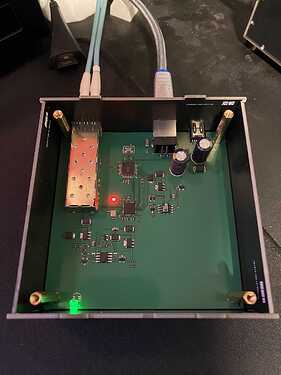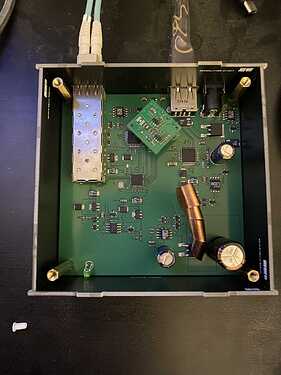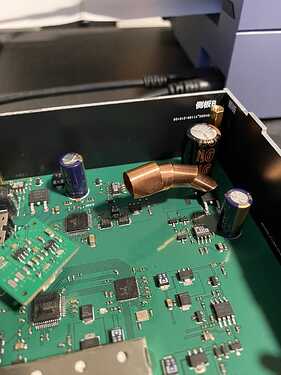Thanks for sharing!
Has anyone explored converting ethernet or usb to Fiber and back again? There are a few devices that’ll do that and I’ve had a couple friends try it and say that it makes difference. I’m looking more at the USB to fiber since I don’t really stream.
I haven’t tried the USB, I’ve only recently found out it was even a thing when reading about the Hifi Rose streamer. As far as the Ethernet to Optical and back, why not just use optical. There are options to stay SFP Ethernet end to end and you can get a good router/switch with built in SFP for under a hundred bucks. If for no other reason that it saves an in between step in going back from optical to Ethernet and you have to get a quality power supply which will add cost.
I think fiber offers some type of benefit? I’m not 100% why but it’s fairly common in the audiophilestyle forum. I don’t think it’s the SFP that makes it better but optical that isolates any noise coming from the source.
Yeah, that’s why you need to take great care in what you introduce by turning it back to Ethernet outside of the destination and why you’re seeing more vendors with an SFP input instead of Ethernet. It just cuts out an unnecessary step.
I believe that balanced audio over dedicated ethernet cables is used in professional broadcast setups. There is a fair bit of kit for that on Thomann, including distribution hubs, receivers, transmitters and the like and that is the basis of my reasoning. I am not sure I’ve come across the idea there is any real benefit for shorter runs. Essentially it seems to work as a balanced signal over long runs of high grade cable. Personally I’d err on the side of it doesn’t really benefit unless you actually need it? After all you are just adding additional signal processing into the path as well as making that longer.
That’s how everyone running fiber without a SFP port on there streamer does it.
And I’ve seen at least one ethernet isolator that basically just does that inside a box with a loop of fiber cable.
You get Isolation from anything upstream in the network, which is a win, but you also then need to pay close attention to the Fiber to Ethernet converter and it’s power supply, since now that’s your primary source of noise, so you probably don’t just want a cheap $50 converter with a cheap SMPS on the receiving end.
I’ve recently seen a lot of chatter on the quality of the actual sfp modules and those making a difference, that I didn’t mess with.
When I experimented with this when I used the NS1 it was a marginal win at best on my network, I preferred the sound via the 2 converters, and left them in the loop, but it wasn’t a black and white clear win.
I actually have a USB fiber isolator thingy coming in the mail. I plan on using a Finisar AOC between the two isolation boxes, and powering one of them (the output box) from a Plixir Elite BDC (also coming). I also got a short Pine Tree Audio USB cable to use between my ultraRendu and the input device, this way the input and output USB cables are the same. All of this should take away any potential bottlenecks of using this solution (other than the solution itself lol). I probably would’ve had some initial impressions by now since the isolator was supposed to arrive a few days ago, but I think USPS lost it. If/when I get it though, I’ll share my impressions on the differences it makes (if any) going between my ultraRendu and Amber 3.
Awesome! Did you buy the one off AliExpress? Could you share the model of the module and unit you bought? It’s hard to find many data points on this atm
Yes I did, and there’s not really a model of the product (or there is, but all of the labeling in the pictures looks to be in Mandarin). It’s sold by “Industrial Parts Store” though, and if it helps here’s a link to the product page.
(https://www.aliexpress.us/item/3256804601237961.html)
It honestly looks kinda sketchy lol, especially with the poorly formatted description. But a couple of people have said good things about this exact one from the link so I decided to give it a shot. Hopefully it’s good, will post impressions here once it arrives and I have some time to compare with/without it in my signal chain.
I’d be curious to see what it looks like inside. That’s the one I was looking at since i wasn’t ready ready to jump on the afterdark one yet. I’m definitely interested in what you find out. I already have a DDC in the chain so it might 0 difference for me.
I could totally take a pic of the internals when it arrives, though there are like 7 other sellers on AliExpress selling what looks to be this exact solution. A couple of the listings do have pictures of the internals so I wouldn’t be surprised if mine looks the same. Here’s the pics from other sellers…
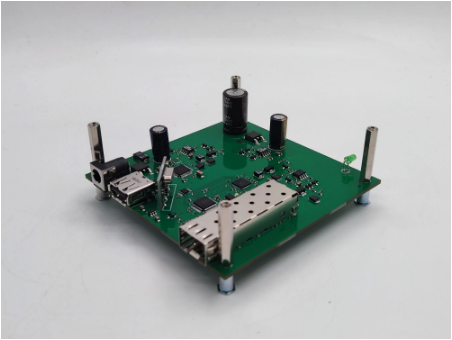
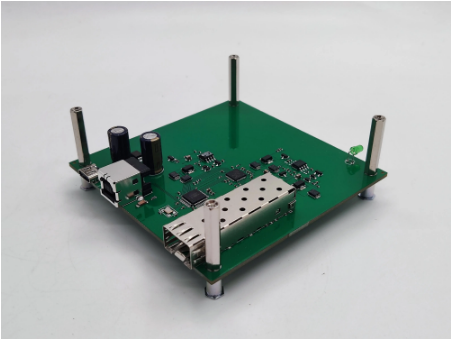
The boards look fairly simple if you ask me, but I’m no electrical engineer.
I will say I didn’t even know about the AfterDark before ordering this. But going off of pictures, the AfterDark looks like if you took the Ali isolators and just added an internal power supply to one of the boxes and put them in a nicer chassis lol. Okay I’m being a little too critical lol, it looks like a major portion of the price for the AfterDark is being spent on the clock so I’m sure there’s a performance difference there. I guess we’ll see how the AliExpress ones perform, and who knows maybe the AfterDark really is the next step up for optical fiber USB isolation/reclocking.
Here’s the internal pics, haven’t been able to test it from the ultraRendu yet, but it works going between my PC and SU6. The only issue is that there’s some intermittent popping with this thing, and I think its because of this random copper spiral piece. The internals look mostly the same as pictures from my previous post except for that weird copper piece. Maybe they messed up one of the solder points on the board (or chip) and just used a this piece of copper as a fix, Idk. If someone else could tell me why that piece may be there I’d really appreciate it (chip it’s attached to is a LD1014D “POWERJFET” if that helps). I’ll probably try exchanging it for another unit since this seems like a manufacturing mistake. But before I do I’ll test it with my ultraRendu to see if the intermittent popping persists.
nvm copper piece is not a manufacturing mistake, this is the response I got from the seller… “The spiral copper sheet is the heat conduction function, reducing heat accumulation in the regulator tube”
Still doesn’t solve my issue with the intermittent popping sounds, hopefully it’s just my computer and it goes away when I use it between my ultraRendu and my DAC.
More updates to come once the Plixir Elite BDC arrives.
I think you mean those boxes and splitters that take XLR and TRS and give one RJ45. Those directly send analogue over an ethernet cable. Digital audio in stage and studio is often sent using Dante.
I think I do yes. I think I got the wrong end of the stick. Thanks for that.
Are you using the stock SFP module? What are you using for the LPS and USB cable?
Yes looks like it’s intended as a somewhat odd heatsink, I guess they saved a couple of dollars doing that.
It looks like the Transmitter is USB powered, I’m a bit surprised given how hot (therefore I assume how much power) all my optical networking stuff gets.
I wonder if power is part of the issue with the dropouts, can you use an external USB-C power supply with it?
AFAIK, popping could be due to sfp module/cable or inadequate voltage on ‘A’box .
I got the popping sound with the stock SFP+ and my Finisar AOC.
When I tested it I used my SGC LPS tuned to 7.5V on the output side and no power supply on the input side since it didn’t seem to make a difference with my issue (tried using an iFi iPower2 on the input side via USB-C). The seller gave me the following advice after I told him how I was testing the device… “Be careful not to connect other isolators in series” so maybe the issue is more with the device interfacing with my Singxer SU-6 than it is an issue with the device itself? But I will mention that someone on head-fi uses this isolator between their Allo USBridge and a Holo Audio Red (as a DDC), so it could also be argued that the issue could be happening somewhere between my PC and the device itself. I’ll try changing USB cables and ports on my computer, and giving the output box 9V of power instead of 7.5 just to see if that does anything. Basically troubleshooting while I wait for the Elite BDC to arrive so I can try it between my Rendu and my DAC. Updates to come!
To answer the USB cable question I was using a Monoprice monolith USB cable between the PC and input isolator (have had no problems with this cable going directly into my SU-6), and then a 5 foot Pine Tree Audio Banshee USB cable between the output isolator and my SU-6.
You’ve been wrestling with this for a while. I don’t envy you, hopefully you’ll be able to get your finger on the issue through continued trial and error.
